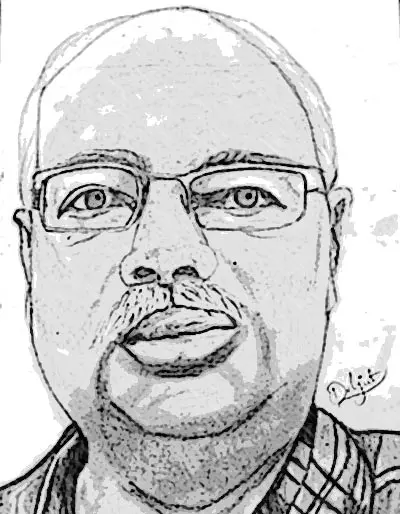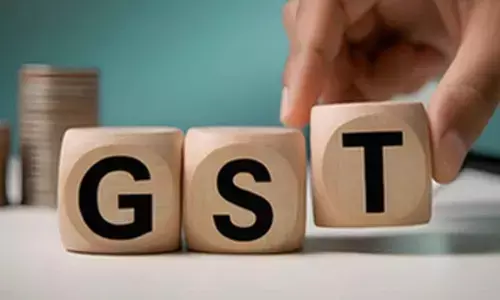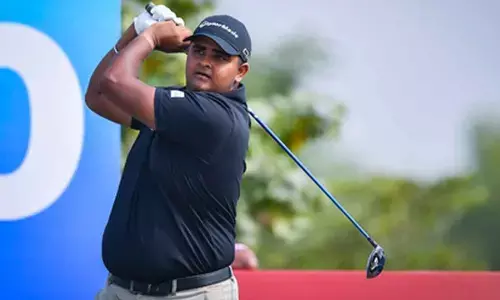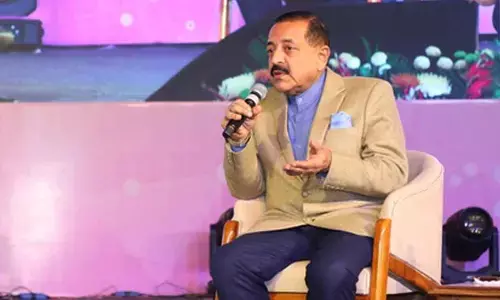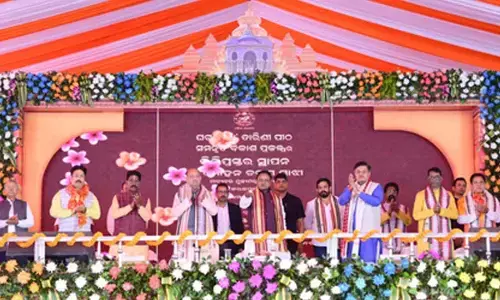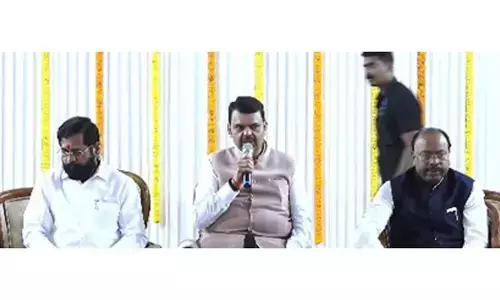The President of India is far from a rubber stamp
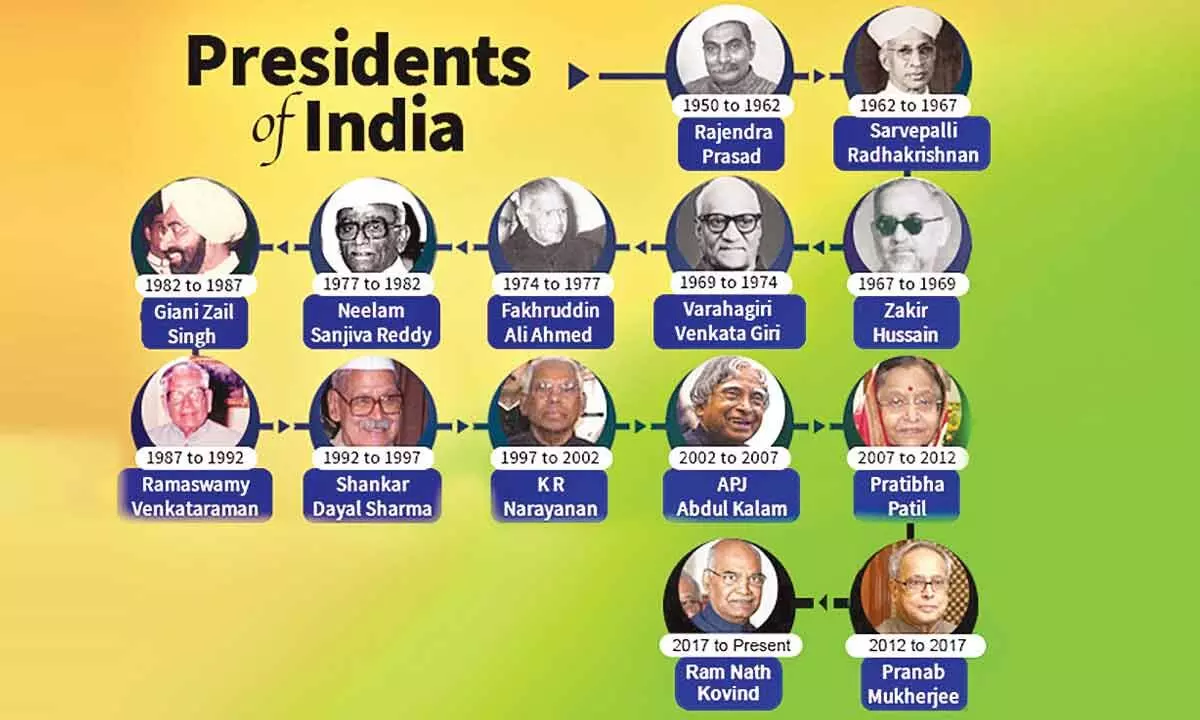
In less than a month’s time India will hold elections for the 15th President of India.
In less than a month's time India will hold elections for the 15th President of India. The role of President in Indian democracy is mostly ceremonial with express mandate to protect the Constitution. But the opposition parties once again indulged in a futile attempt to hurriedly come together and made lot of sound and fury.
The non-BJP parties should understand is that any attempt to forge an arithmetical unity for a particular event cannot succeed. Some leaders will hog headlines, utilise the photo-op session and will vanish into their own ivory towers to throw stones at each other. It is high time they also understand that all these parties have lost their credibility and people are not willing to accept any kind of event-oriented alliance between most unlike minded parties. The way they struggled to put up an opposition candidate for presidential election has further exposed how disunited they are both in terms of ideology and goal to defeat BJP in the next elections.
Why such experiments by opposition fail and why people are not ready to believe them? Let's take a quick look into the opposition parties' attitude. Congress party which had fought against Mamata Banerjee in Assembly elections and accused her of many things and joined hands with Left to defeat her attended the meeting convened by her. Purpose was " Defeat BJP candidate for presidential election". But when it came to the issue of stopping the surge of BJP in West Bengal elections, Congress did not think of joining TMC. They did not do anything to stop division of votes at that time.
In UP elections, the Congress wanted to throw out BJP and come to power. But it could not work out an alliance with Samajwadi Party. Result was both missed the bus. In Telangana, TRS and Congress consider BJP to be its bitter enemy. But they are poles apart and not willing to join hands to defeat BJP. The TRS also kept out of the meeting of Opposition parties on presidential elections convened by Mamata on the grounds that Congress was attending the meeting.
Situation is no different in the national capital. Though AAP and Congress are against BJP, they refuse to come together. Let's take the example of Goa Assembly elections. The opposition votes were divided as the AAP and Congress contested separately.
The essential point to be noted here is that a sporadic show of arithmetical unity only on the eve of a specific event like the presidential elections is doomed to fail, irrespective of the quality of the candidate.
Presidential elections have always been controversial. The 1969 election was most controversial. Soon after Dr Zakir Hussain died of a heart attack on May 3, 1969, the then Prime Minister Indira Gandhi went against the party decision. The Congress party had nominated Neelam Sanjiva Reddy as official candidate. VV Giri decided to contest as Independent. Swatantra party, Jana Sangh and others had put up Dr C D Deshmukh who was Finance Minister during Nehru era as opposition candidate. The iron lady decided to support VV Giri. She conveyed this decision to her supporters and started persuading young MPs of Congress to support VV Giri.
When the Congress party realised what was happening, party President S Nijalingappa pressured her to openly support the party's candidate Neelam Sanjiva Reddy, but Indira Gandhi refused to do so. On the other hand, on August 1969, four days before the polls, she made a public statement asking all to vote as per their conscience. The hidden message behind this was loud and clear and VV Giri won the election by over one percent of the votes. VV Giri got a total of 4,20,077 votes, Neelam Sanjiva Reddy got 4,05,427 votes, while the joint candidate of Swatantra Party and Jana Sangh, Chintaman Dwarakanath Deshmukh got 1,12,769 votes.
Even the election for first President of India Babu Rajendra Prasad was not unanimous when he was in the fray for second term. Chowdhry Hari Ram and Nagendra Narayan Das were pitted against him but Rajendra Prasad polled 4,59,698 votes, while Das and Ram failed to cross even 5,000 votes.
Hariram did not give up. In 1962 when Dr Sarvepalli Radhakrishnan contested, Hariram and Yamuna Prasad Trisulia were fielded against him by opposition. Dr Radhakrishnan received 5,53,067 votes, while the other two candidates managed only 10,000 votes between them.
In 1977, it was a different situation. Soon after the death of Fakhruddin Ali Ahmed, Congress fielded Neelam Sanjiva Reddy. Though 36 others filed nominations separately, all of them were rejected and Reddy became the unanimously elected president.
Similarly in 1997 former chief election commissioner T N Seshan contested against K R Narayanan for the 11th President of India but got only abut 51000 votes as against 9.56 lakh votes polled by Narayanan.
The social media which is hyperactive these days has been making all kinds of weird comments on the post of President. Some said President is just a 'rubber stamp.' Some other feel that it is just a ceremonial post and has no power.
Here's the answer for what a President can do. Let's take the example of Rajendra Prasad (1950 to 1962). He proved to be a strong leader with a mind of his own. He differed with India's first Prime Minister Jawaharlal Nehru on many issues, but stayed within the limitations of his office.
Dr Radhakrishnan, (1962 to 1967), added dignity to his office. He is known as a scholar but not a man to comprise on issues pertaining to the interest of the country. He succeeded in making Nehru sack the then Defence Minister VK Krishna Menon after the country suffered set back in 1962 India-China war.
Abdul Kalam, who served from 2002 to 2007, earned the sobriquet of being 'the people's President'. He endeared himself to the people — with his simple lifestyle, and to children and youth and is known for his inspiring speeches for Gen Next.
Narayanan differed from his predecessors who were faced with the task of appointing a Prime Minister from a hung Parliament. He also refused to accept the recommendation to impose Presidents Rule in a state under Article 356 when the then government led by I K Gujral recommended dismissal of Kalyan Singh government in UP in 1997. Later, when Vajpayee government sought the dismissal of Rabri Devi as Bihar CM, he returned the recommendation for re-consideration.
One of the latest examples of a President who brought a new working style to Rashtrapati Bhavan was Pranab Mukherjee (2012-2017). He worked with Manmohan Singh and Modi governments. Despite differences in political thinking, he had good rapport with Modi. The PM even sought Pranab's guidance on issues like demonetisation. This did not prevent Pranab from sending back Gujarat's Anti-Terrorism Bill with queries. Mukherjee became the first President to visit an RSS event in Nagpur in June 2018 not withstanding criticism from Congress party.
This clearly shows that Presidents can be independent and are not mere rubber stamps as many who do not know the history or depend on social media feel. Let's wish the new presidential candidate Dr Murmu all the best.

